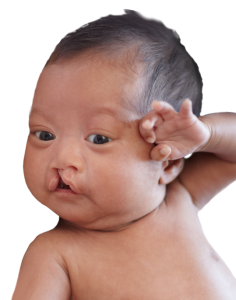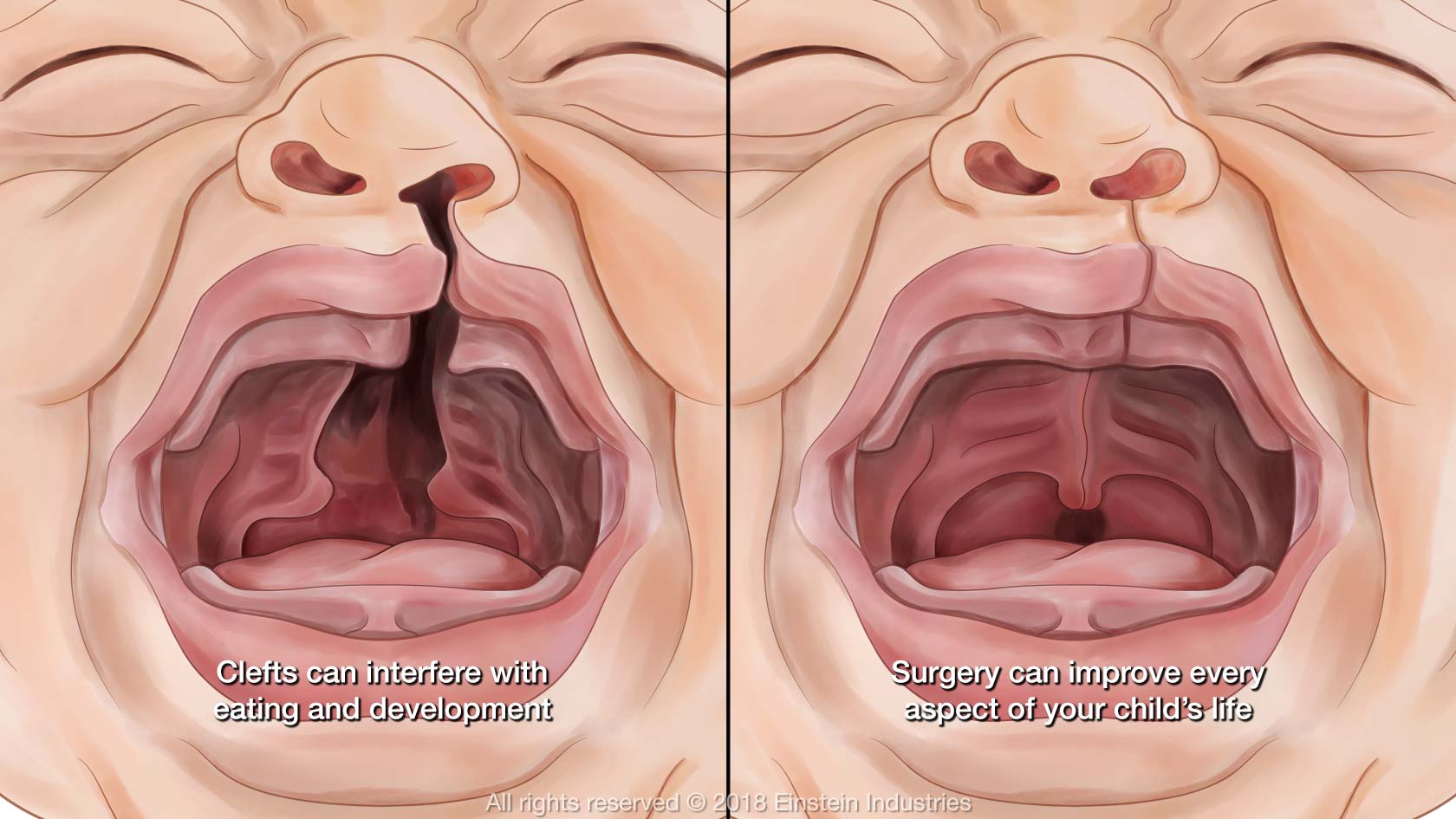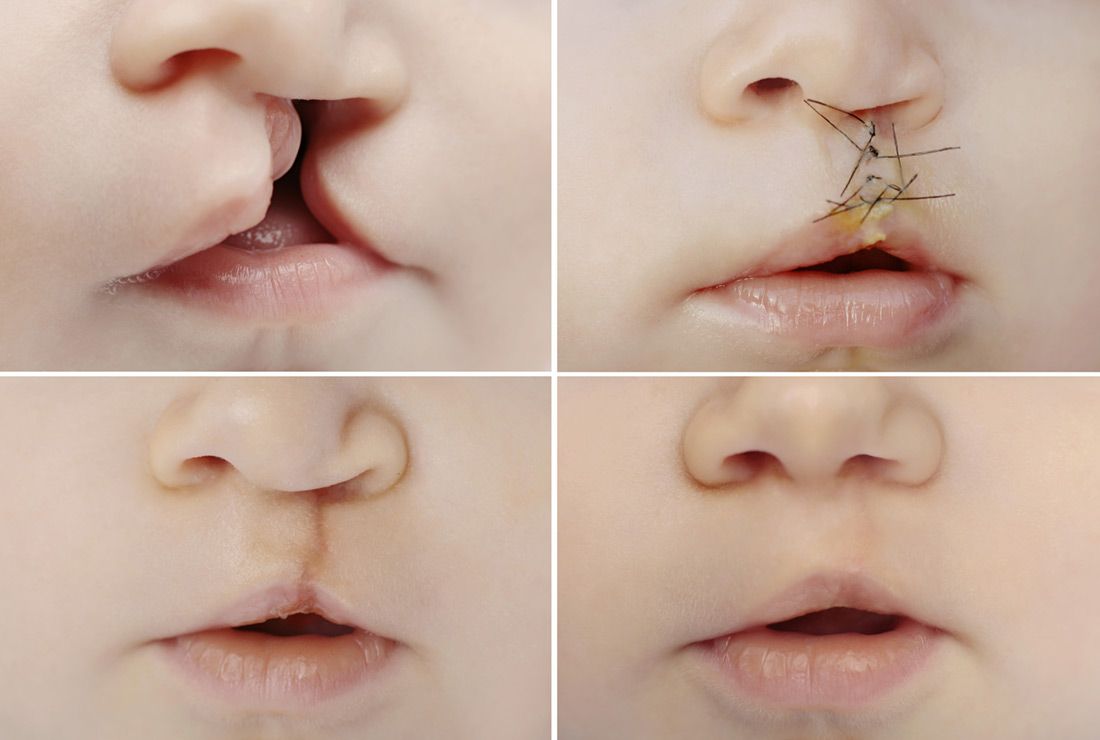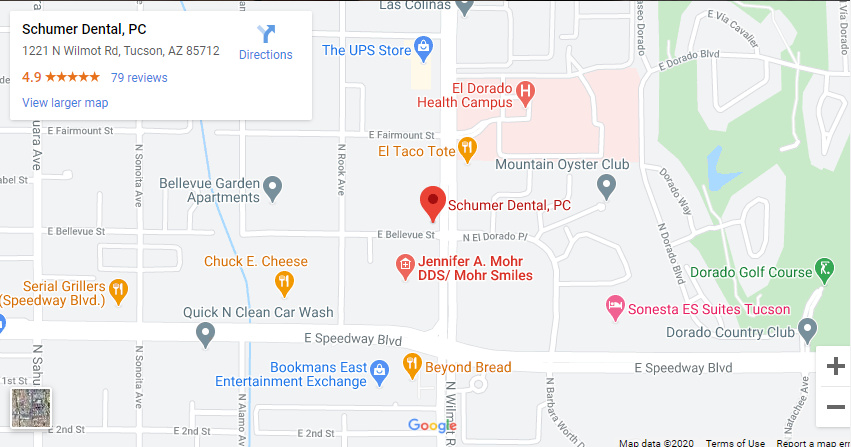For a child, a cleft lip or palate can interfere with speech, eating, and breathing. For parents, it can be heartbreaking.
However, children born with a split in their upper lip or the roof of their mouths can undergo surgery to close the gap.
What does this condition mean for your child?
Understanding the Basics of Cleft Lips and Palates
- Cleft Lip
While cleft lips and palates are often seen together, they can occur separately. A cleft lip can involve not just the lip, but the nose and portions of the upper jaw, as well. Statistically, it is more common in boys.
- Cleft Palate
Seen more often in girls, this opening can extend the full length of the roof of the mouth. It creates a direct connection between the mouth and nasal passages, often interfering with breathing, eating, drinking, and speaking.
How much of the mouth can a cleft lip or palate affect?
Cleft Lips and Palates Are One of the Most Common Birth Defects in the U.S.
*According to the UC Davis Children’s Hospital
Is there a way to find out if your child has a cleft lip or palate before birth?
Getting a Diagnosis
In most cases, it is extremely difficult to predict whether your child will have an orofacial defect before birth, even with an ultrasound. However, a genetic counselor can sometimes identify the possibility and provide advice during a consultation.
While the presence of a cleft lip or palate is usually obvious once a child is born, a plastic surgeon or craniofacial surgeon can diagnose their specific skeletal and soft tissue abnormalities. Based on this examination, they can begin to coordinate treatment with other specialists.
Let’s look at what can put your child at risk…
Understanding the Risk Factors
While some experts have suggested that there is a genetic component to having a cleft lip or palate, others suspect that exposure to certain medications during pregnancy plays a more significant role. Diabetes and smoking can also interfere with a baby’s development.
What steps can you take to protect your child?
Understanding Your Control over the Risk of a Cleft Lip or Palate
- No Guarantees
Because the cause of a cleft lip and palate is still unknown, there is no certain way to prevent the condition.
- Discuss Your Meds with Your Doctor
If a doctor prescribes medication while you are pregnant, be sure to discuss the potential risks and impact it can have upon your child with both that doctor and your OB-GYN.
- Avoid Tobacco Products
Avoiding smoking and other tobacco products during pregnancy may also reduce the risk.
Will a cleft lip or palate affect your child’s overall health?
With treatment, most children with orofacial clefts do well and lead a healthy life.
– Center for Disease Control and Prevention
Treatment Is a Long and In-Depth Process
Depending on the severity of the defects, treatment can involve a series of surgical procedures starting soon after birth and continuing throughout childhood and into early adulthood.
However, because the condition affects the bone, soft tissue, and teeth, the American Cleft Palate – Craniofacial Association recommends that a special interdisciplinary group of healthcare providers take responsibility for coordinating the treatment of children suffering from these defects.
These cleft and craniofacial teams typically include surgeons, orthodontists, prosthodontists, speech pathologists, and auditory specialists who work together to provide treatment. They are located throughout the United States and internationally.
Those interested in finding and contacting the nearest team are encouraged to visit the Cleft and Craniofacial Teams and Centers website for more information.
That sounds expensive. Are there more affordable options?
Surgical Treatment Is Highly Recommended
- Surgery
Surgical cleft lip repair and cleft palate repair are the most reliable options.
- Molding Plate
In less severe cases, your child can wear a molding plate to minimize future surgeries.
- Insurance Available
Insurance will typically cover a substantial portion of the cost.
Are there any lasting effects?
The Results of Treatment Will Leave Only a Faint Scar
Life after Treatment
Most children who receive appropriate treatment for their cleft lip and cleft palate recover from the physical and psychological problems and lead happy and productive lives. However, it is a long and difficult road for both the child and the parents. Affected families are encouraged to seek out support groups.
What’s the first step?
Immediate treatment is essential to helping your child overcome the many challenges posed by a cleft lip or palate. Reach out today to schedule a consultation with a specialist and discuss your situation.

























